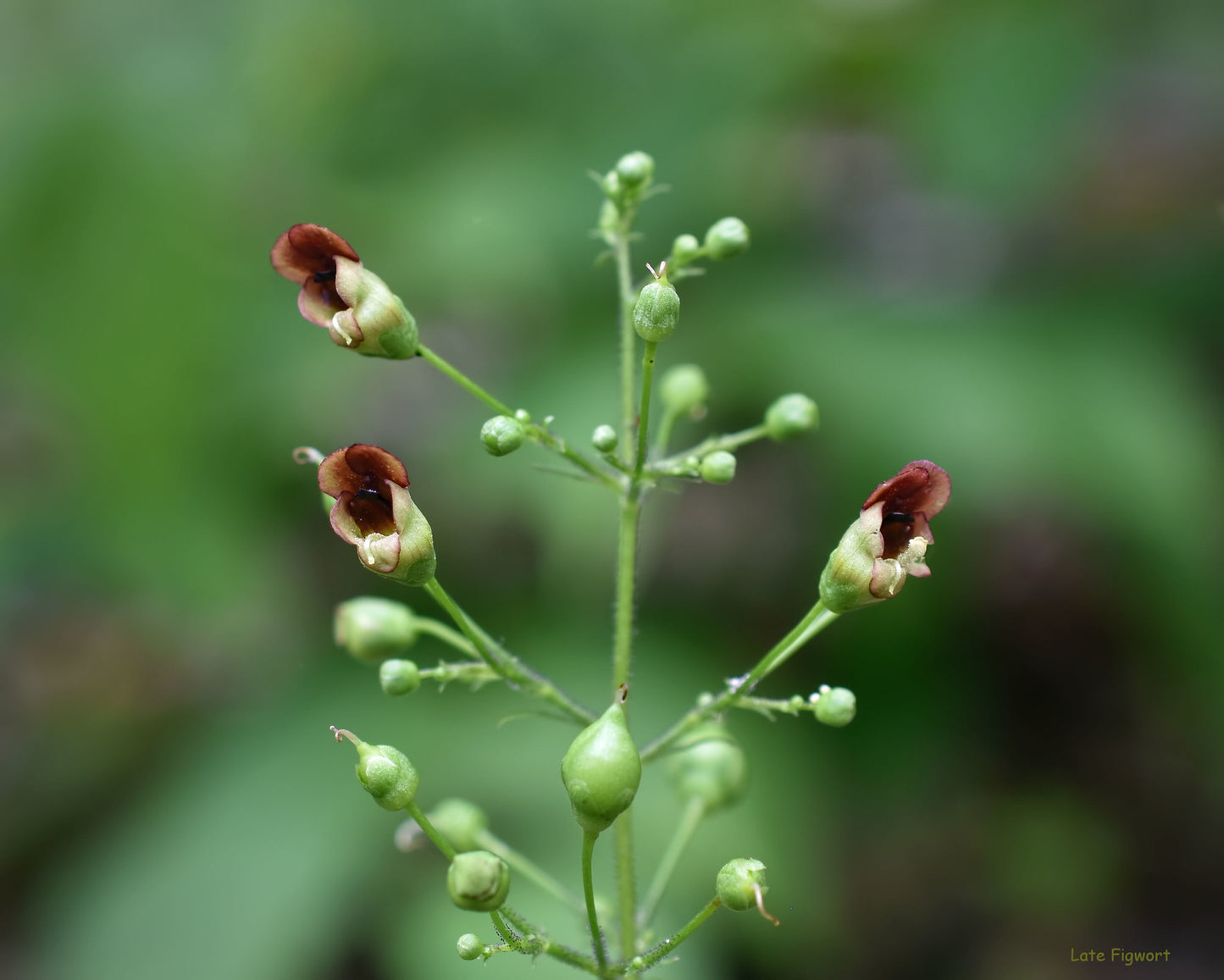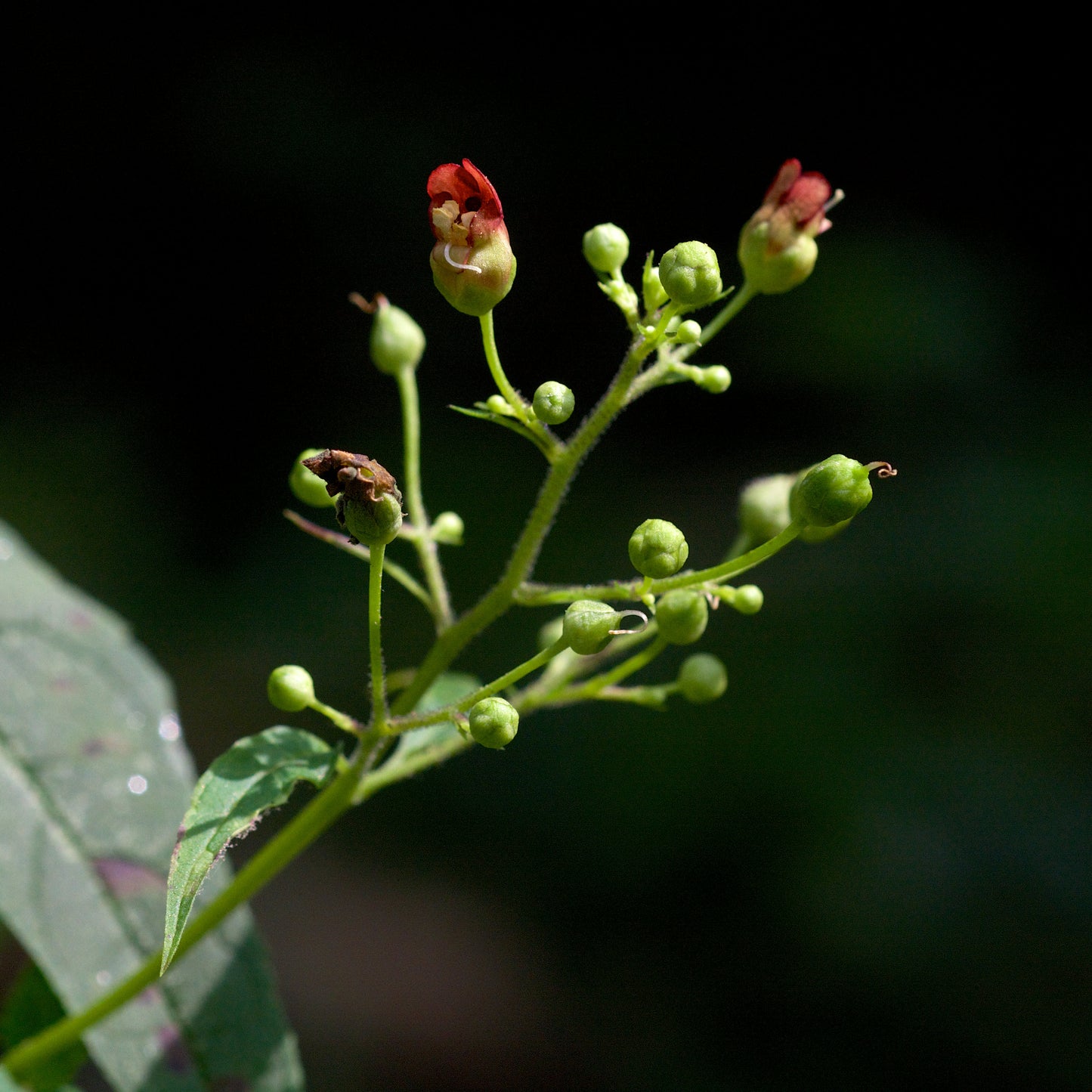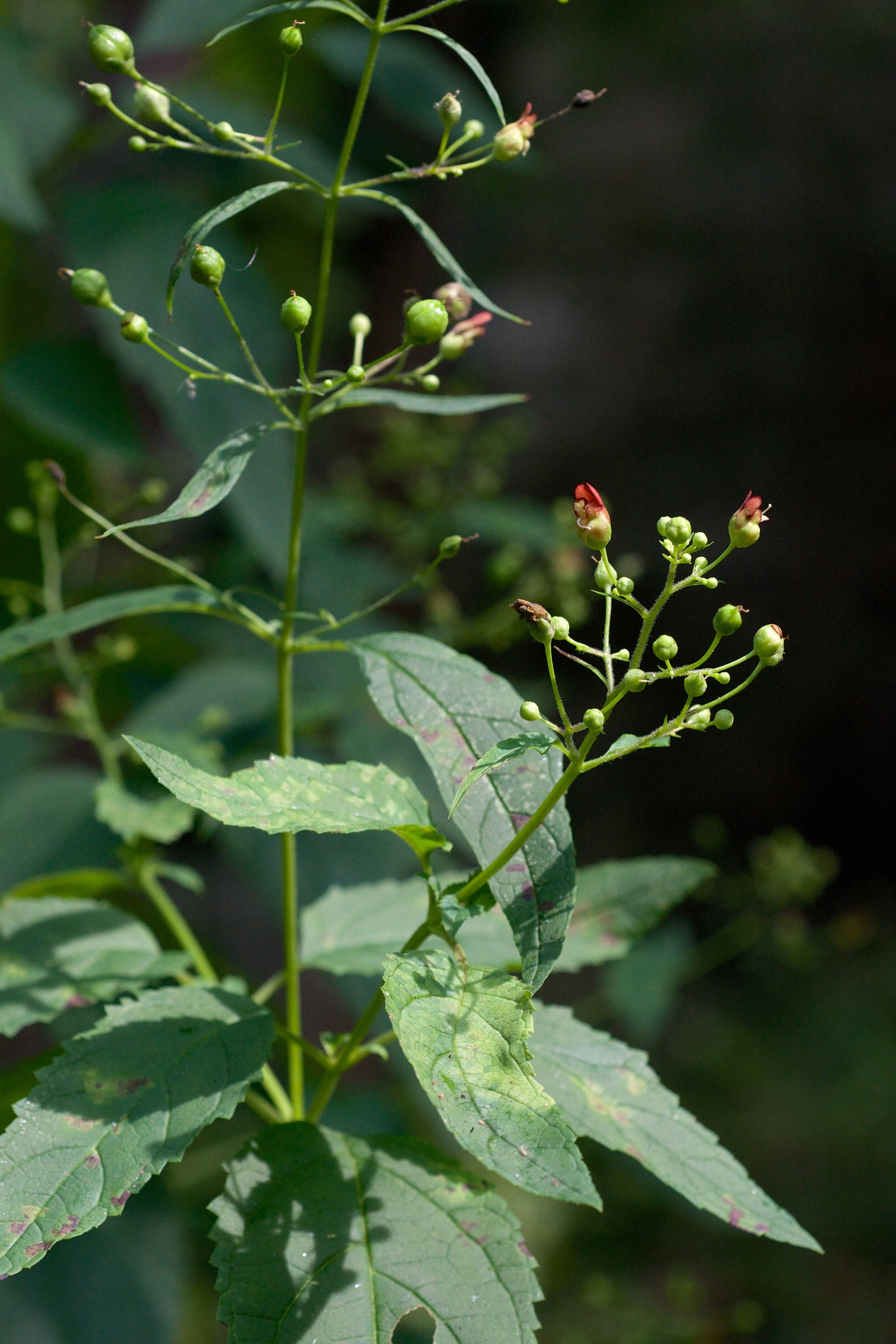Floridaseeds
Figwort Scrophularia marylandica 1000 Seeds USA Company
Figwort Scrophularia marylandica 1000 Seeds USA Company
Couldn't load pickup availability
The Figwort, a member of the snapdragon family, bears small, brown flowers arranged in upright, open clusters. While these flowers may not boast striking beauty, their intriguing appearance and nectar-filled blooms attract a diverse array of insects. Scrophularia marilandica, characterized by its upright, square-stemmed habit, branches extensively and typically reaches heights of 5-10 feet. This perennial species is indigenous to open woods and roadsides spanning from Quebec to Ontario to Minnesota, southward to Florida and Texas. It thrives in rich, moist woodlands, ravines, thickets, and woodland margins. Its diminutive, greenish-purple tubular flowers, measuring 1/4 inch in length, feature reddish-brown interiors and bloom in loose, terminal, pyramidal panicles during the summer months (July to September), each reaching up to 12 inches in height. The plant's leaves are ovate to lanceolate, dull green, and range from 4 to 6 inches in length and up to 3 inches in width, with serrated margins. Its fruit takes the form of an ovoid capsule. Optimal growth conditions include moist, well-drained soils in areas of full sun to partial shade, with a preference for partial shade. It thrives particularly well in sandy loams and is suited to woodland garden environments. Maryland Figwort is hardy in USDA hardiness zones 4 to 7.
Growing Instructions for the Figwort
The seeds have a period of dormancy. They can be planted outdoors in the fall or winter for spring germination or they can be cold stratified to simulate winter conditions and to break their dormancy at any time of the year. 1. Put the seeds in a ziplock bag. 2. Put the bag in the refrigerator and leave it there for 1-2 months. 3. The seeds like moist, well-drained soil. Prepare a mixture of half potting soil and half sand, perlite or vermiculite. Put the soil in a pot. 4. Put the seeds on the surface of the soil and then press them into the soil. The seeds need light to germinate. 5. Water the soil so that it is moist but not wet. 6. When the seedlings are a few inches tall, they can be transplanted.
Materials
Materials
Shipping & Returns
Shipping & Returns
Dimensions
Dimensions
Care Instructions
Care Instructions
Share






